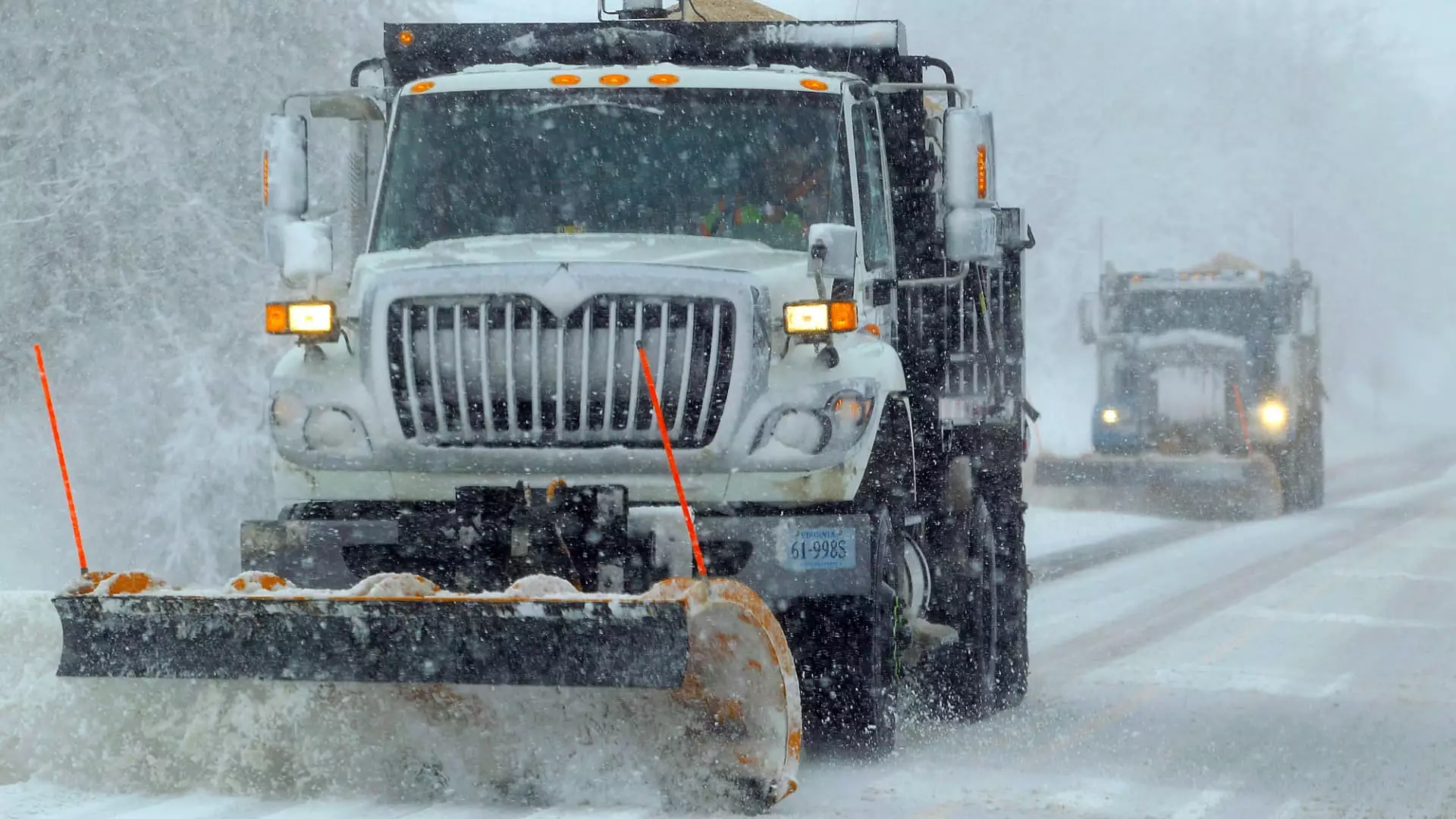As a formidable winter storm swept across the United States, millions of Americans were thrust into a state of alarm and preparedness. This unprecedented weather event was characterized by a unique combination of heavy snowfall and brutally cold temperatures, both of which threatened the daily lives of residents across the nation. States such as Kansas, Arkansas, Kentucky, and Virginia were quick to implement states of emergency, showcasing the gravity of the situation caused by a polar vortex phenomenon. These weather conditions, reminiscent of the harsh winters faced in previous decades, were heralded by the National Weather Service (NWS) as a significant weather event not only for the immediate impact but also for its potential lasting effects on infrastructure and individual well-being.
The polar vortex, a low-pressure system characterized by swirling, frigid winds around the polar regions, played a pivotal role in this weather onslaught. When the polar vortex experiences instability and wobbles, it can cause these frigid air masses to plunge into the continental U.S., leading to severe winter storms that blanket wide areas in cold and snow. The current storm moved eastward from the central plains, enveloping approximately 60 million people across 30 states with dire weather alerts that warned of potentially crippling ice and heavy snowfall over the ensuing days. The imminent threat of the polar vortex could be likened to an uninvited yet formidable guest arriving unexpectedly to disrupt the peace.
The onslaught of snow and ice led to significant disruptions in transportation, with Kansas City International Airport momentarily halting operations as crews scrambled to clear snow-covered runways. This scenario was indicative of the broader chaos that unfolded across the Midwest, where blizzard conditions led to the closure of major highways like an 18-mile stretch of Interstate 70 in Kansas. Delays in air travel rippled throughout the country, culminating in nearly 7,000 weather-related flight disruptions, a number that strained travel systems already battered by the ongoing pandemic recovery.
Cities such as Cincinnati, Chicago, and St. Louis undertook preemptive measures by treating roads and establishing warming centers for residents. With more than 2 million individuals under blizzard warnings, the NWS cautioned against conditions that would severely limit visibility and challenged the most experienced drivers. These measures reflected an understanding that the storm was not merely a weather occurrence but a substantial shift that could disrupt lives on multiple levels—from simple commutes to urgent medical emergencies.
While the immediate focus of the storm was on those already affected, meteorologists warned that the situation would evolve as the storm system continued its march eastward. The lower Mississippi Valley was set to bear the brunt of severe weather risks, including tornadoes and damaging winds. As cities like Jackson, Mississippi, and Baton Rouge, Louisiana, braced for the oncoming tempest, the fears of residents were compounded by the prospect of a dubious winter uncharacteristic for these southern locales.
Meanwhile, the storms rolled into major urban centers such as Washington, D.C., and Philadelphia, where residents prepared for snowy and icy conditions. In Virginia, up to a foot of snow was predicted, presenting a scenario that could lead to widespread school and business closures. Meteorological forecasts indicated that as Monday approached, snow would be accompanied by a daunting drop in temperatures across the eastern two-thirds of the country, resulting in highs plummeting to 10-25 degrees below average—an extraordinary deviation that serves as a stark reminder of the ferocity of winter’s reach.
This winter storm serves as a potent illustration of the complexities and challenges posed by extreme weather patterns intensified by climate change. As people navigate the aftermath of such events, one must consider the broader implications these weather occurrences have not just for the immediate moment but for the future. The unity and resilience exhibited in the face of adversity can provide a beacon of hope, showcasing the ability of communities to come together in times of crisis. However, as meteorological phenomena such as the polar vortex continue to grow in intensity and frequency, it raises questions about preparedness and adaptability in a changing climate, thus highlighting the urgent need for ongoing discussions about climate resilience.



Leave a Reply